Discover 9 hidden attractions, cool sights, and unusual things to do in Alba Iulia (Romania). Don't miss out on these must-see attractions: National Museum of the Union, Coronation Cathedral, and St. Michael's Cathedral. Also, be sure to include Alba Carolina Citadel in your itinerary.
Below, you can find the list of the most amazing places you should visit in Alba Iulia (Alba).
Table of Contents
National Museum of the Union
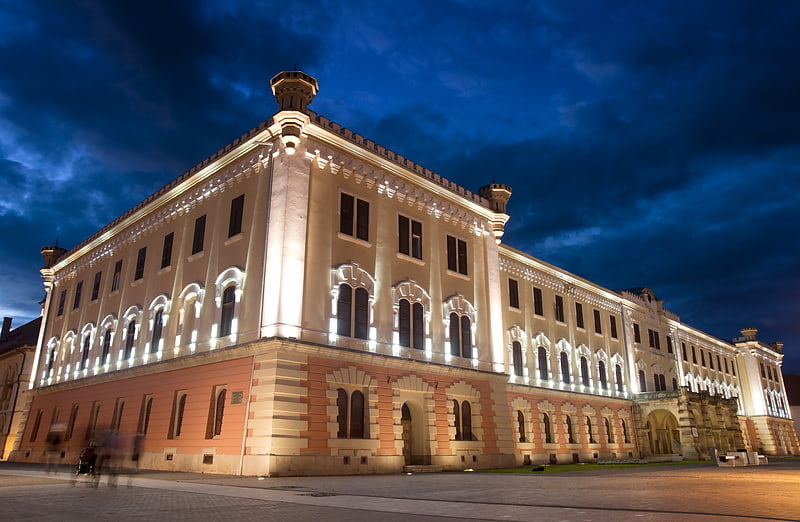
The National Museum of the Union is a history and archaeology museum in Alba-Iulia, Romania.[1]
Address: 12-14 Strada Mihai Viteazul, Alba Iulia
Coronation Cathedral
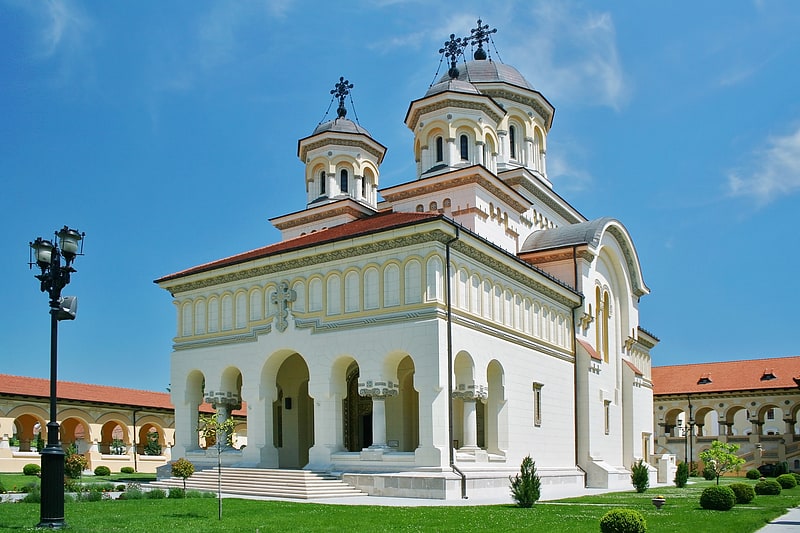
Also known as: Catedrala Încoronării din Alba Iulia
Scenic Romanian Orthodox cathedral. The Coronation Cathedral, dedicated to the Holy Trinity and the Holy Archangels Michael and Gabriel, is a Romanian Orthodox cathedral located at 16 Mihai Viteazul Street, Alba Iulia, Romania. Built soon after and in commemoration of the Union of Transylvania with Romania, it is the seat of the Romanian Orthodox Archdiocese of Alba Iulia.[2]
Address: Strada Mihai Viteazu 16, 510010 Alba Iulia
St. Michael's Cathedral
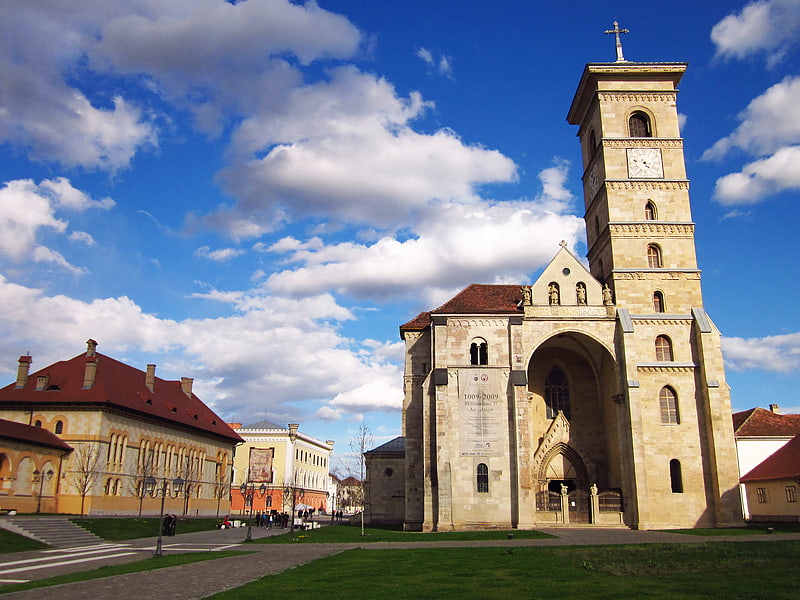
Also known as: Catedrala Sfântul Mihail din Alba Iulia
Cathedral and romanesque architecture. St. Michael's Cathedral is the Roman Catholic cathedral of the Roman Catholic Archdiocese of Alba Iulia, Romania, and the oldest and the longest cathedral in the country.[3]
Address: 21 Strada Mihai Viteazul, Alba Iulia
Alba Carolina Citadel
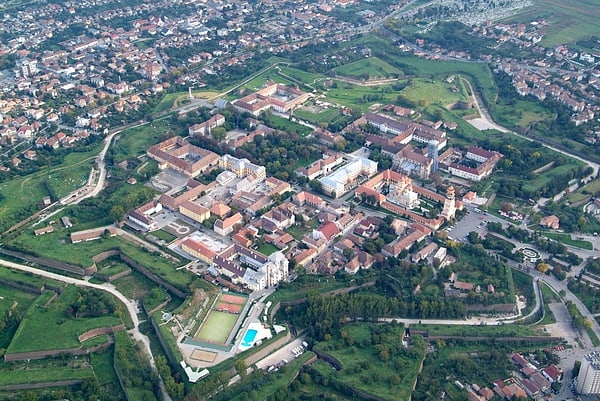
Fortress in Alba Iulia, Romania. The Alba Carolina Citadel is a star-shaped fortress located in Alba Iulia. Its construction commenced on November 4, 1715 during the Habsburg rule in Transylvania, and was completed in 1738. 20,000 serfs were involved in its construction, which is estimated to have cost around 3 million guldens. The citadel was built on the site of two other fortifications: the legionary fortress of Legio XIII Gemina, as well as the medieval Belgrad citadel.
The shape of the citadel, an iconic element of Vauban architecture, influenced the design of Alba Iulia's city logo when the city adopted city branding in 2014. The city received 47.5 million lei in 2009 for the restoration and conservation of the citadel.
The citadel is named after Charles VI, known as Carol VI in Romanian, who was the Holy Roman Emperor at the time of the citadel's construction.[4]
Apulum
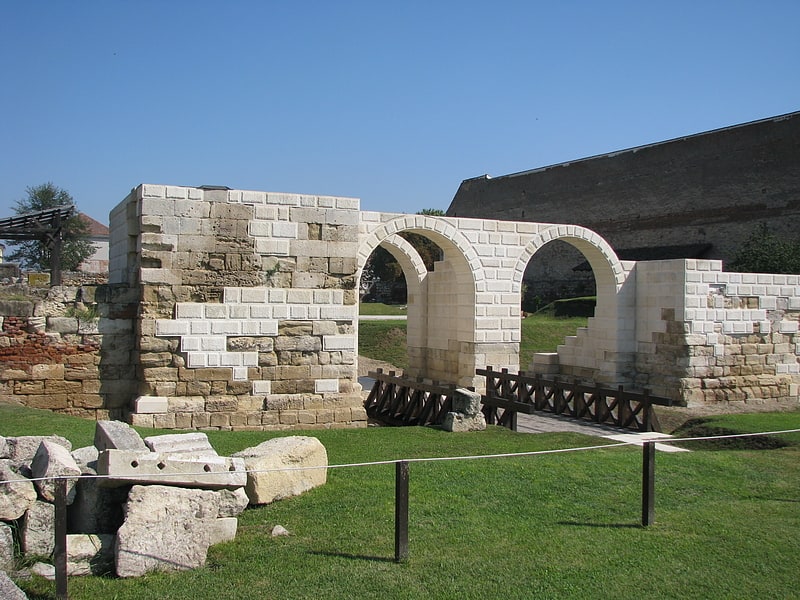
Apulum was a fort in the Roman province of Dacia in the 2nd and 4th centuries AD, located in today's Alba-Iulia, Romania. It is the largest castrum located in Romania, occupying 37.5 hectares.[5]
Address: Piaţa Cetăţii, nr. 1, Alba Iulia
Maieri Churches

The Maieri Churches are a pair of Romanian Orthodox churches located on Iașilor Street, Alba Iulia, Romania. Each is dedicated to the Holy Trinity.[6]
Alba Carolina Fortress

City wall
Address: Cetatea Alba Iulia, Aleea Sf. Capistrano, nr. 28, Alba Iulia
Lipoveni Church
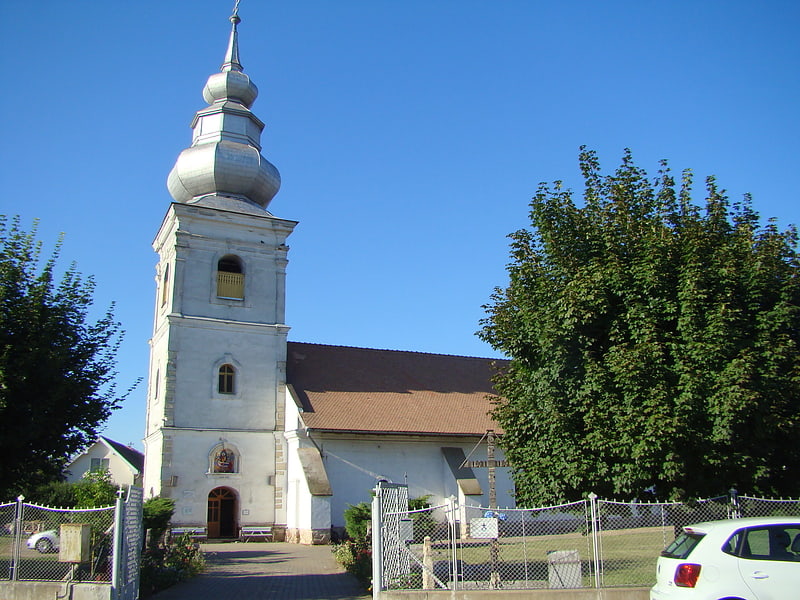
The Lipoveni Church is a Romanian Orthodox church located at 17 Mărășești Street, Alba Iulia, Romania. It is dedicated to the Dormition of the Theotokos.
The church takes its name from Lipoveni, a neighborhood in the northern part of the city. This in turn was named after Lipova, home of the Romanian workers who were building the Alba Carolina Fortress. Tradition holds that they built the church.
An inscription above the door indicates a construction date of 1690–1691. However, as the church does not appear on a detailed map of 1711, but only starts to be depicted in 1752, it appears to have been built within that interval. The principal ktetor was Ioan Dragoș de Thurna, who was ennobled by Maria Theresa in 1742, and whose name and arms appear on silver candleholders of 1736 and 1766. A construction date of 1720 has been suggested, as well as 1736, based on the candleholder.
Between 1759 and 1761, the church was subject to clashes between Orthodox and Romanian Greek-Catholics, causing damage that required major repairs. In 1761, Sofronie of Cioara, shortly before fleeing to Wallachia, held a synod of Transylvanian Orthodox in the church. Subsequently, the walls were raised, the ceilings rebuilt, the nave and vestibule joined, buttresses and a massive spire added, in 1763. An inscription notes that the original altar was replaced in 1827.
Fragments of the original painting were discovered during repairs in 1922. The interior painting dates to 1957–1958, as does the iconostasis. Somewhat unusually for churches of the period, the exterior features a painting. The window frames are decorated with floral and leaf motifs. From the time of Sofronie's departure until 1948, the building belonged to the Romanian Greek-Catholic Church, outlawed that year by the new communist regime. The churchyard contains 18th-century funerary stones, inscribed in Cyrillic.
The church is listed as a historic monument by Romania's Ministry of Culture and Religious Affairs.[7]
1 Decembrie 1918 University
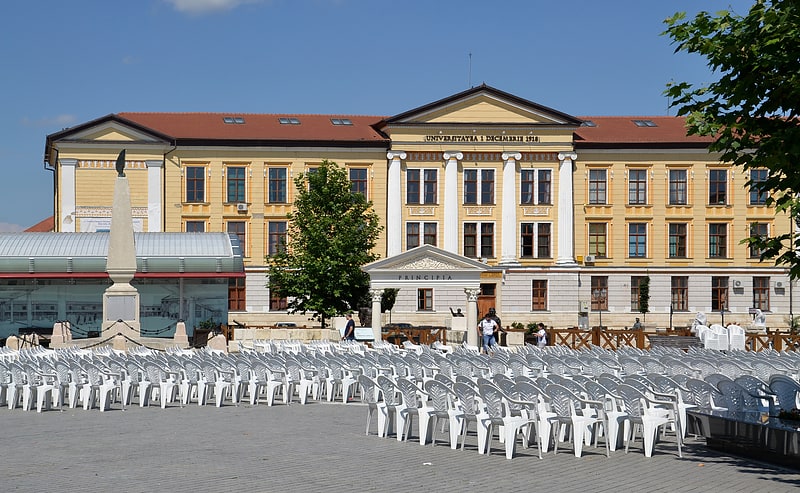
Also known as: Universitatea 1 Decembrie 1918 din Alba Iulia
Higher educational institution in Alba Iulia, Romania. "1 Decembrie 1918" University, Alba Iulia is a public higher education and research institution founded in 1991 in Alba Iulia, Romania. It is a state institution, integrated into the national higher education system, which functions based on the Constitution of Romania, the Law of Education, the University Charter, and its own regulations.
The name of the university is derived from the date, 1 December 1918, when the Union of Transylvania with Romania was declared, today recognized in Romania as Great Union Day. Its Latin name, Universitas Apulensis, refers to the historical region known as Dacia Apulensis within Roman Dacia, where the university is located.
The university has five main faculties, each divided into several departments. They are:
- History and Philology
- Economic Sciences
- Sciences and Engineering
- Law and Social Sciences
- Orthodox Theology